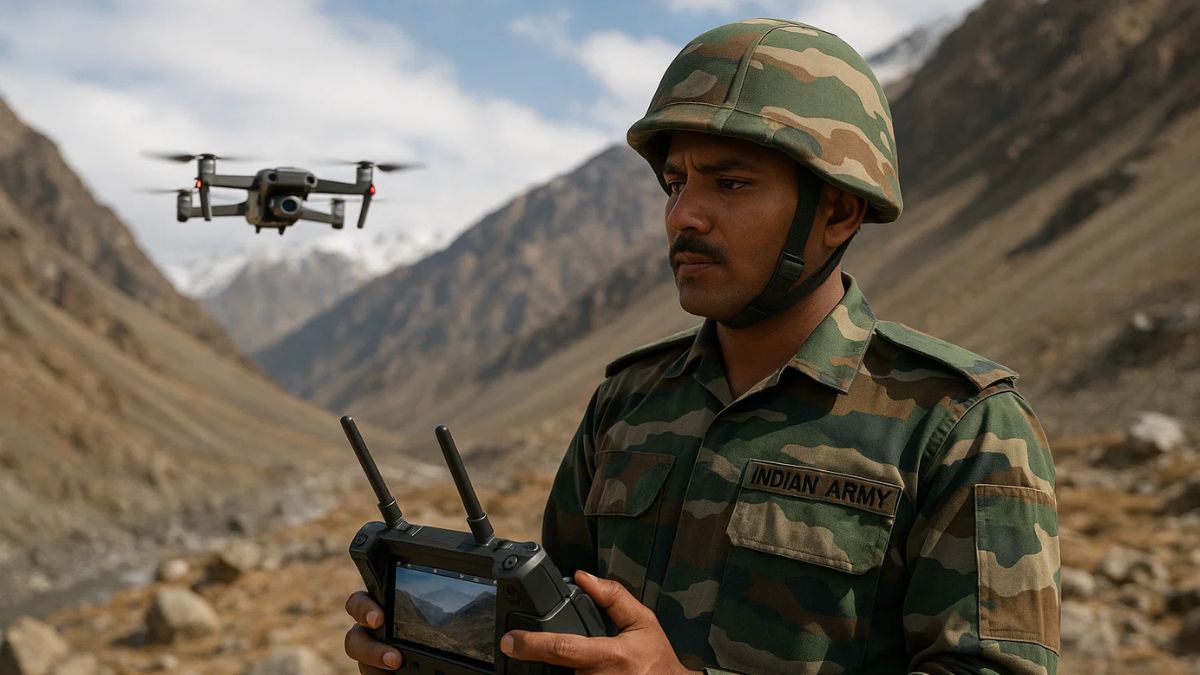In a decisive move to counter the fast-evolving threat of enemy drones on the modern battlefield, the Indian Army has initiated the induction of ‘Saksham,’ its first indigenous Counter-Unmanned Aerial System (UAS) Grid.
Designed to detect, track, and neutralise hostile drones in real-time, Saksham marks a major leap in India’s defence technology and digital warfare capabilities.
What is Saksham?
Developed by Bharat Electronics Limited (BEL), Saksham is an AI-enabled system that integrates multiple sensors, command and control modules, and soft- and hard-kill countermeasures.
It is designed to protect the Army’s operational zones from enemy drone intrusions across the newly defined Tactical Battlefield Space (TBS), an expanded warfighting zone that extends up to 3,000 metres above the ground into the ‘Air Littoral,’ the contested layer between surface and air operations.
The initiative stems from operational lessons learned during Operation Sindoor, where errant drones breached ground-based air defence networks, exposing critical vulnerabilities in traditional perimeter defence systems.
The operation underscored the need for a networked, adaptive, and AI-driven counter-UAS framework capable of managing threats across complex, multidimensional battlefields.
How will Saksham help?
To meet this challenge, the Army approved the Saksham project under the Fast Track Procurement (FTP) route, ensuring rapid induction across field formations within the next year.
Once operational, Saksham will serve as the nerve centre of the Indian Army’s Counter-UAS Grid, providing a unified air-ground threat picture to commanders in real-time.
According to an Army spokesperson, Saksham— short for “Situational Awareness for Kinetic Soft and Hard Kill Assets Management”— will function as a modular and scalable Command and Control (C2) system.
It operates over the secure Army Data Network (ADN) to provide an integrated Recognised UAS Picture (RUASP) for all operational arms and formations.
How does Saksham operate?
The spokesperson elaborated that Saksham will integrate its own and enemy UAS data, CUAS sensors, and countermeasures on a common GIS-based platform, and enable automated decision support, real-time visualisation, and predictive threat analysis using AI-driven tools.
It offers modular scalability, allowing rapid upgrades to counter evolving drone technologies, and synchronise soft- and hard-kill assets for coordinated engagement of aerial threats.
Saksham will also interface with the Army’s Akasheer System, enhancing situational awareness by mapping all airspace users— friendly, neutral, or hostile— within the combat zone.
This will help generate a live RUASP across the entire Tactical Battlefield Space, improving coordination between air defence units, surveillance elements, and ground forces.
Why does the Army need Saksham?
With its AI-enabled predictive targeting, Saksham will empower commanders to anticipate and neutralise drone threats faster, ensure precision engagement, and protect key assets and troop positions.
The induction of Saksham aligns with the Army’s broader vision for a digitally integrated, technology-driven force under its Decade of Transformation (2023–2032) roadmap.
By bringing together indigenous innovation, artificial intelligence, and battlefield automation, the system represents a significant stride toward achieving information dominance and operational sovereignty in future wars.
Once fielded, Saksham is expected to serve as the backbone of India’s Counter-UAS defence architecture, providing a critical shield over troops, convoys, and installations, while redefining how the Army secures control over the Air Littoral, the newest frontier of 21st-century warfare.
